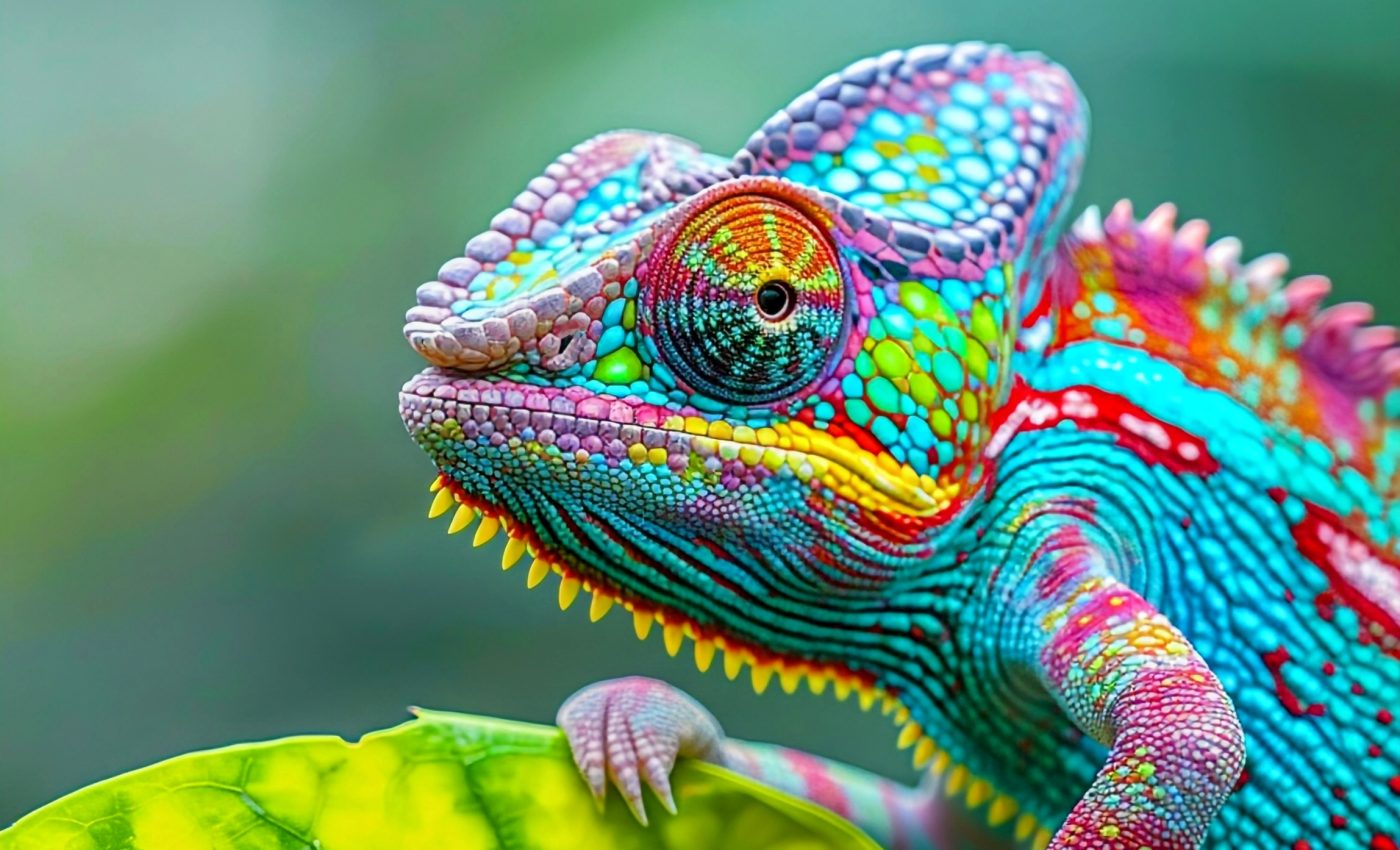
Animals got their colors 150 million years before plants
Ever wondered how colors come into existence? How do they influence the lives of beings around us? This isn’t just about how we humans perceive different colors, but also how they shape the world of animals and plants.
From peacocks flaunting their magnificent tail feathers to poison-dart frogs donning their bold hues, colors serve a purpose. Similarly, the brilliant hues of flowers and fruits aren’t just for our aesthetic pleasure.
Color vision in animals
Researchers from the University of Arizona embarked on a journey to understand the evolution of color vision in animals and the functionality of colors in our environment.
The research revolved around the concept of “conspicuous colors.” These are the colors that instantly snag our attention – the bold reds, striking yellows, vivid blues, and intense purples. But their role extends far beyond just being eye-catching.
Colors in the animal world
Color plays a crucial role in the animal kingdom. It isn’t merely about looking attractive. Instead, it’s an effective way for animals to communicate.
The researchers identified two significant types of color signals exploited by animals – warning and sexual.
Warning and sexual signals
Warning color signals are perhaps the most striking element of color communication among species. These signals act as a universal caution sign, telling potential predators to “back off.”
Interestingly, these warning signals are far more common than sexual signals. They span across the animal kingdom, while sexual signals are limited to arthropods and vertebrates.
On the other hand, sexual color signals form an integral part of mating rituals. They attract and select the best possible mate. However, these signals necessitate highly developed vision.
Plants, too, have been assigning crucial roles to colors for millions of years. Bright colors in plants primarily serve two functions – to distribute pollen (flowers) and disperse seeds (fruits).
Findings from the past
According to the team’s findings, color vision in animals evolved around 500 million years ago – about 150 million years before the arrival of colorful fruits. In addition, colorful flowers emerged around 200 million years ago.
The study was led by John J. Wiens, a professor in the Department of Ecology and Evolutionary Ecology at the University of Arizona. He was assisted by Zachary Emberts, an assistant professor of integrative biology at Oklahoma State University and a former postdoctoral scholar at the University of Arizona.
A remarkable finding from their work is that warning color signals manifested before sexual color signals – around 150 million years ago, with the latter emerging about 100 million years later.
“Warning signals are at least five times more widespread. That’s the overall pattern,” Wiens said. “There has been a dramatic explosion of both warning and sexual color signals in the last 100 million years.”
Colors and animal dynamics
Predator-prey relationships are profoundly influenced by the visual cues provided by colors within the environment.
For prey species, possessing colors that allow them to blend seamlessly into their surroundings can mean the difference between survival and predation.
Camouflage serves as a quintessential example of how colors are utilized to create a visual cloak, enabling prey to evade detection. Conversely, predators, such as the tiger with its stripes, use their coloration strategically to ambush unsuspecting prey.
The careful balance of coloration within predator-prey dynamics underscores the evolutionary arms race where subtle changes in hue and pattern can significantly affect ecological interactions and survival.
Human impacts and adaptive signals
As humankind continues to alter the biosphere, the natural manifestations of color in the animal and plant kingdoms are not immune to these influences.
Deforestation, pollution, and climate change are leading to habitat destruction and fragmentation, which in turn affect how species utilize and manifest colors for survival.
The adaptive signals once finely tuned to specific environments are now facing unprecedented challenges. Researchers emphasize the importance of preserving natural habitats to maintain the ecological functions of colors.
Looking to the future, continued study of these vibrant natural phenomena not only enriches our understanding of ecology but also strengthens conservation strategies aimed at safeguarding the myriad species that rely on the tapestry of colors for their survival.
Unsolved mystery of colors in animals
The reasons behind the sudden escalation of these color signals remain a mystery. However, the team managed to identify three critical groups that likely contributed to this surge – marine ray-finned fishes and terrestrial birds and lizards.
“In the future, it would be even more interesting to study what drives the ability of animals to see specific colors like red or blue,” Emberts said.
So, what do you think might be the next revelation in this vibrant journey of color evolution?
The study is published in the journal Biological Reviews.
—–
Like what you read? Subscribe to our newsletter for engaging articles, exclusive content, and the latest updates.
Check us out on EarthSnap, a free app brought to you by Eric Ralls and Earth.com.
—–













